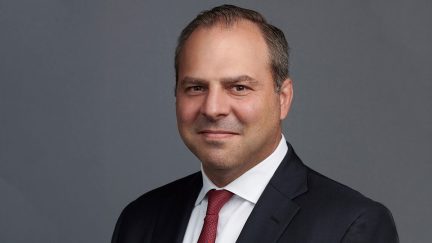Never miss a story — sign up for PLANSPONSOR newsletters to keep up on the latest retirement plan benefits news.
Fourth Quarter Volatility Wipes Out DB Plans’ Funding Status Gains
Pension plans’ funding rose a mere 70 basis points last year, according to Goldman Sachs Asset Management.
Despite higher interest rates and significant contributions by pension plans, their funding status rose only 70 basis points last year, according to a new report from Goldman Sachs, “2018 Pension Review ‘First Take:’ Groundhog Day.”
While some plans notably increased fixed-income allocations, likely linked to significant contribution activity and the intra-year rise in funded levels last year, other pension plans may not have been able to act before the volatility of the fourth quarter erased gains. Goldman Sachs’ report, written by Senior Pension Strategist Mike Moran, says, “In some ways, it feels like the 1993 movie ‘Groundhog Day,’ as we relive the same scenario over and over again. For corporate pensions, that may mean seeing funded levels rise, missing the opportunity to lock in those gains, and then watching those gains dissipate, especially in light of an aging bull market and expectations of a potential slowdown.”
Goldman’s report is based on the 50 largest pension plans in the S&P 500. These companies’ funding levels rose during 2018 to their highest level since the 2008 financial crisis, but gave back most of their increases in the fourth quarter. “This is, unfortunately, a scenario that has played out before for U.S. corporate defined benefit [DB] plans and is contributing to a sense of déjà vu.”
Allocations to fixed income rose to 48% by the end of 2018, the highest level Goldman Sachs has ever tracked in DB plans. In 2017 and 2018, the majority of DB plans were cash flow negative, meaning that some of their contributions were used to fund benefit payments and never made their way into asset allocations. Furthermore, Goldman Sachs says, another reason why allocations to fixed income rose last year could well have been because pension plans withdrew allocations from other asset classes in order to pay benefits.
“Also, recall that the end of 2018 was quite volatile,” Goldman’s report says. “The S&P 500 lost around 9% in December, while fixed income had low single digit returns as interest rates fell. Some plans may not have been able to effectuate rebalancing actions before the end of the year, resulting in higher fixed-income allocations than anticipated.”
Over the past 10 years, there have been times when pension plans could have de-risked through better asset liability matching but some did not, Goldman Sachs says, resulting in many plans having to repeat their contributions. By the end of 2017, plans were collectively underfunded by $245 billion for a funded ratio of 86%.
For 2019, Goldman Sachs expects fixed-income allocations to rise and it recommends that pension plans take a “more customized approach in managing these assets,” the report says. “Unless the fixed-income allocation is tailored to the actual liability profile of the plan, the hedging assets may not perform as contemplated and funded status may decline unexpectedly.” To accomplish this, Goldman Sachs recommends that pension plans hire a strategic partner to use overlays and derivatives to fine tune hedges and position the portfolio for an annuitization in-kind transfer.
Goldman Sachs also notes that pensions are increasingly turning to outsourced chief investment officer (OCIO) services and that this movement could help them improve their funded status.
Goldman Sachs’ full report can be downloaded here.


